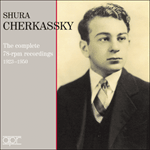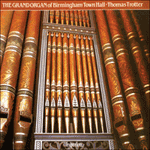
Welcome to Hyperion Records, a British classical label devoted to presenting high-quality recordings of music of all styles and from all periods from the twelfth century to the twenty-first.
Hyperion offers both CDs, and downloads in a number of formats. The site is also available in several languages.
Please use the dropdown buttons to set your preferred options, or use the checkbox to accept the defaults.

from notes by Leslie Howard © 1991
extrait des notes rédigées par Leslie Howard © 1991
Français: Alain Midoux
aus dem Begleittext von Leslie Howard © 1991
Deutsch: Anne Steeb/Bernd Müller
 Liszt: Complete Piano Music Liszt: Complete Piano MusicLeslie Howard’s recordings of Liszt’s complete piano music, on 99 CDs, is one of the monumental achievements in the history of recorded music. Remarkable as much for its musicological research and scholarly rigour as for Howard’s Herculean piano p ...» More |
 Michael Zadora - The complete recordings Michael Zadora - The complete recordings‘Few of the recordings can be a touch steely in places due to their rarity, but Mark Obert-Thorn ensures that Zadora’s tonal qualities are respected a ... ‘Zadora’s affinity for and commitment to this repertoire certainly cuts through the sonic grime. With so many reissues of reissues of reissues on the ...» More |
 River of music River of musicFrom their Welsh grandmother following love across the sea to Sierra Leone, to their Antiguan grandad passing on his own dashed hopes of a musical career, this album celebrates the musical threads of the Kanneh-Mason family. Prefacing Schubert’s ‘ ...» More |
 Shura Cherkassky - The complete 78-rpm recordings, 1923-1950 Shura Cherkassky - The complete 78-rpm recordings, 1923-1950In his later years, Shura Cherkassky (1909-1995) was regarded as one of the last ‘Romantics’—a throwback to the so-called ‘golden age’ of pianism in the first decades of the 20th century. As a pupil of Josef Hofmann, he had an impeccable pedigree, ...» More |
 The Grand Organ of Birmingham Town Hall The Grand Organ of Birmingham Town Hall‘A blazing triumph! Marvellous stuff!’ (Gramophone)» More |
 Liszt: Piano Music Liszt: Piano Music |

